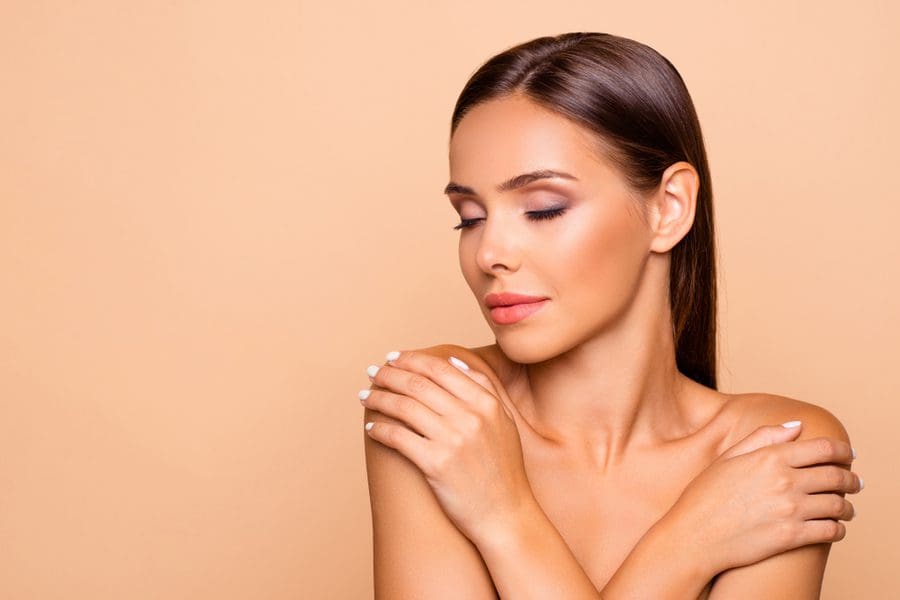Your skin may need a reboot as the weather cools from summer’s warmth to fall’s cooler months. It’s time to hit the reset button on your skincare routine. Strip everything back to basics and get ready to strengthen your skin’s barrier against the winter that’s coming. Here’s how to sort out these complaints and refresh your skin.
Step 1: Back to basics.
Give your skincare routine a complete overhaul for one week by switching to a gentle cleanser and moisturizer with no active ingredients (meaning, just a cleanser with no a purpose other than cleansing). Use only cleanser and moisturizer during the one-week reset. Avoid products containing essential oils, acids, vitamins, anti-agers, antioxidants, skin brighteners, fragrance, etc.
A refresh will help make sure any irritation, redness, or oiliness isn’t caused by a product. Dermatologists say many of their patients’ issues—especially breakouts, dry skin, and dark spots— are results from using the wrong products. Combining products that aren’t suited to each other can overstimulate and damage the skin.
If you have been using a product that gives your skin trouble, the issue usually will clear up in about a week, though vitamin A derivatives such as retinoids can take longer to purge. After paring back to basics for one week, you can feel comfortable that any remaining issue is not caused by a product.
Step 2: Wear sunscreen.
Sunscreen is one of the best anti-aging preventatives. SPF protects and allows any existing skin damage to properly heal. Studies say aging slowed and hyper-pigmentation decreased when users applied sunscreen regularly.
Step 3: Find your new skincare go-to’s.
Continue using the same gentle cleanser and moisturizer if you are happy with the results of your reset. As the weather gets cooler, start trying new products one at a time so you can identify any addition that may cause a problem. If any product triggers a new skin issue, go back to step 1.
Step 4: Reveal fresh skin with gentle exfoliation.
Consider a gentle exfoliator to reveal fresh, glowing skin. During the summer we expose our skin to the sun. We apply sunblock and sweat more. This can build up dead cells and leave skin feeling dehydrated as it cools off outside. Exfoliation helps slough the dead layer off so that you can treat the skin below. After exfoliating, use a moisturizer to nourish and soothe the skin. You may want to try a moisturizer with antioxidants for a healthy glow.
Hydrating oils are gaining fans with their light texture and affinity with the skin. Augustinus Bader has just launched The Face Oil, a restorative, fast-absorbing formula that melts into the skin instantly (click here). This is from the specialist whose Rich Cream revolutionized the skincare game in 2018.
Step 5: Consider using an antioxidant serum.
An antioxidant serum worn under sunscreen offers an added layer of skin protection against pollution and sun damage. Look for lightweight formulas that contain vitamins C and E. Consider choosing a serum with C E Ferulic acid or antioxidant-rich botanical ingredients such as green tea.
The best new technology has extended the reach of serums beyond targeting specific areas such as wrinkles or age spots. One impressive all-around treatment is the revamped Advanced Night Repair, which Estée Lauder launched as one of the first ever mainstream skin serums (click here).
Step 6: Know when to visit a dermatologist.
If you are fighting specific skin issues, find an expert you trust and agree on a targeted regimen. If you suffer from acne blemishes, there are multiple possible pathogenic factors, so it’s best to work with an expert. Your dermatologist can give you expert advice and procedures to address wrinkles, under-eye hollows and bags and more. You can buy nonprescription over-the-counter products for these issues, but professional treatments work faster and more efficiently, with longer-lasting results.






